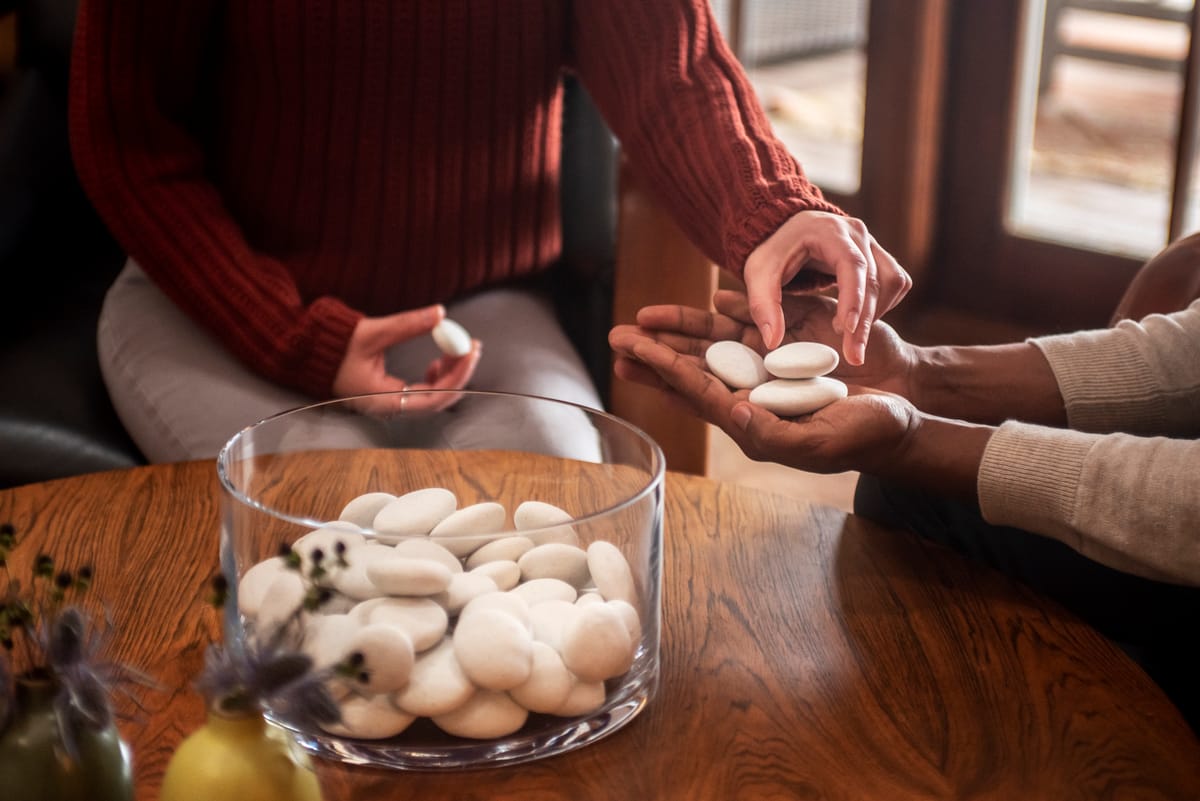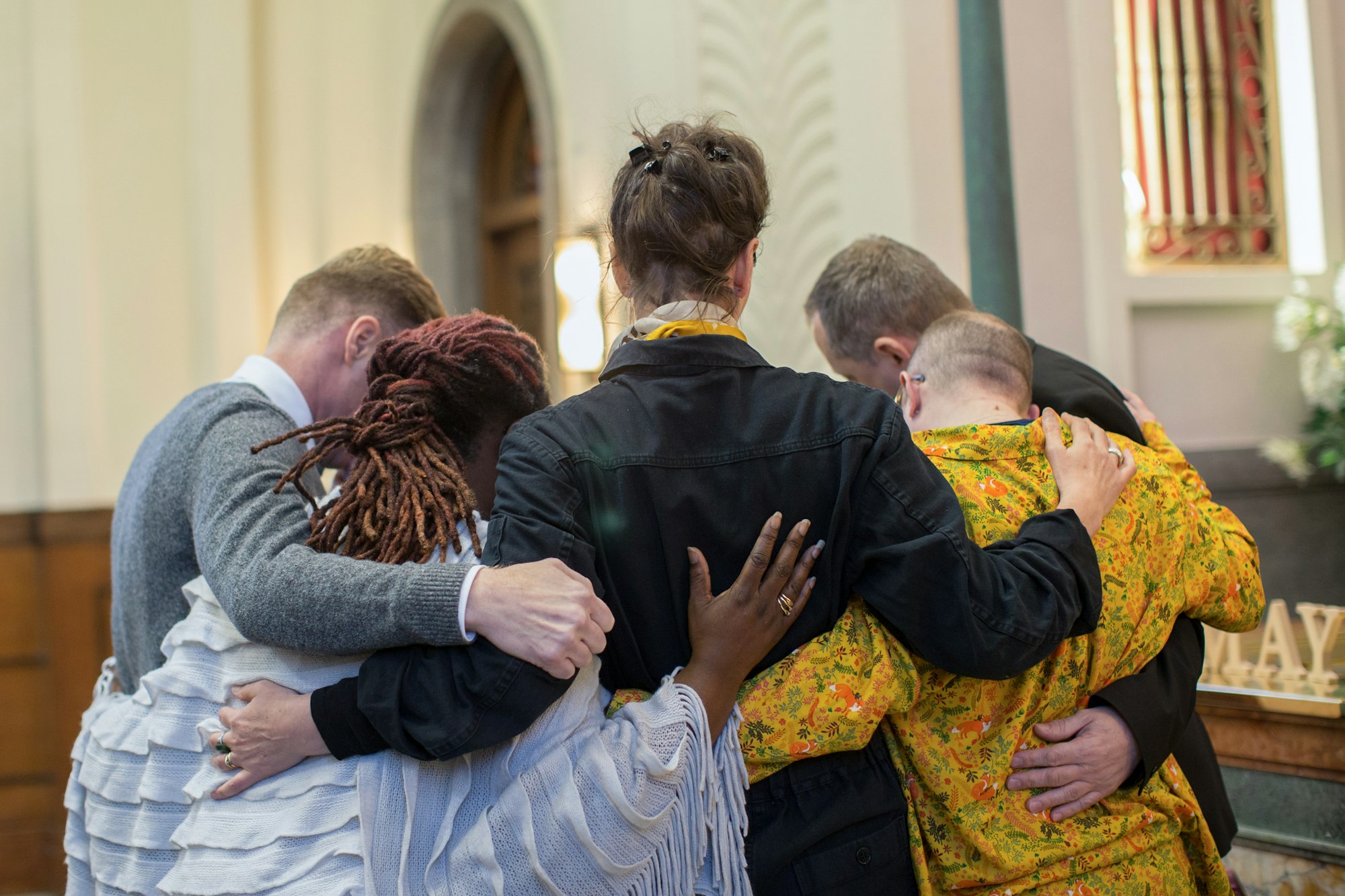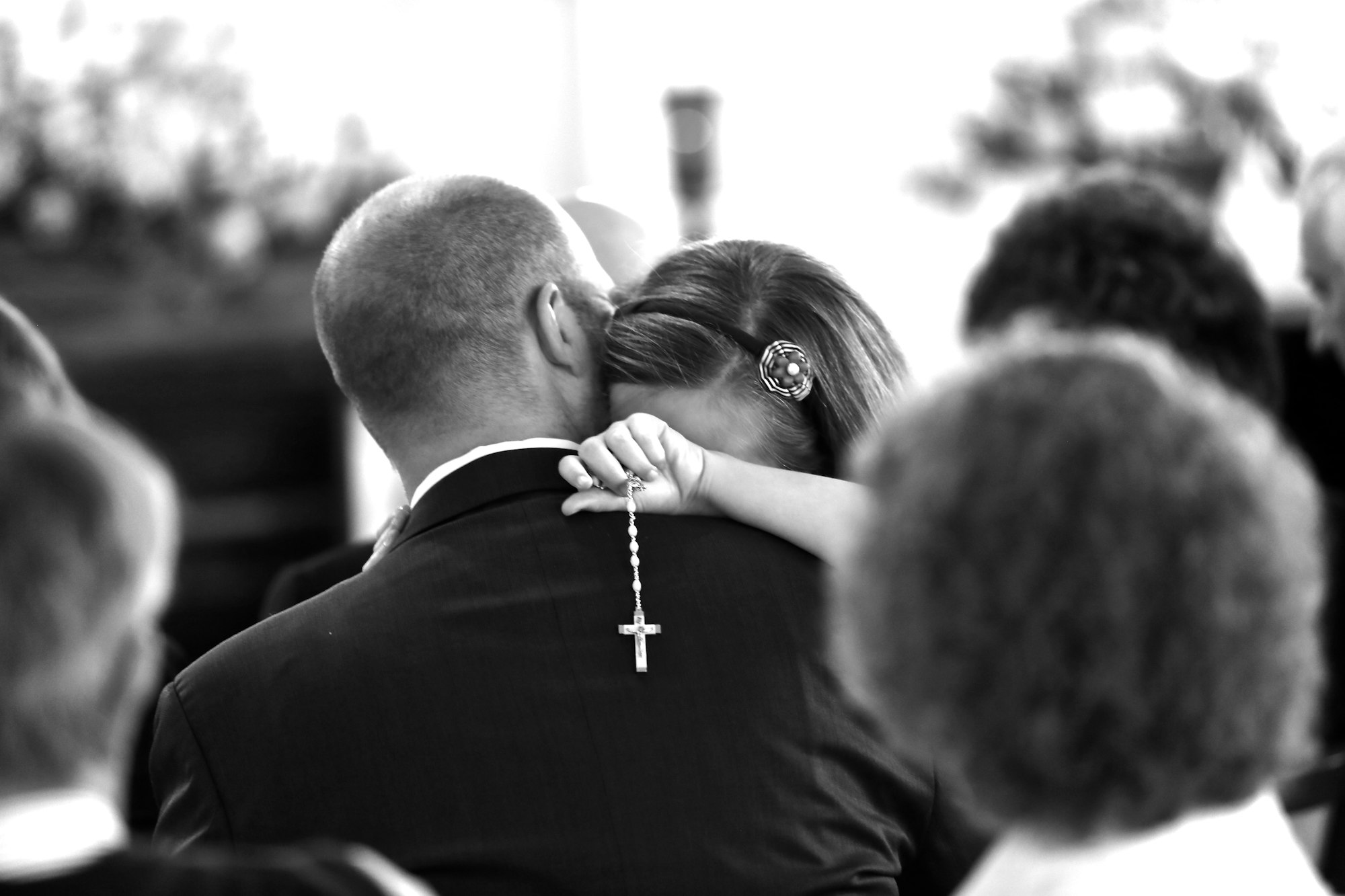When Grief Divides Families: Navigating Different Grieving Styles
Family members grieve differently, which can cause conflict. Learn to navigate family grief dynamics and support each other through loss.

Key Takeaways
- Family members naturally grieve in distinct ways based on personality, relationship to the deceased, and cultural background, which can lead to misunderstandings rather than lack of love.
- Understanding the difference between intuitive grief (emotion-focused) and instrumental grief (action-focused) helps families recognize that different expressions are equally valid.
- Open communication, patience with different timelines, and acknowledgment of each person's unique relationship with the deceased can prevent conflict and strengthen family bonds during loss.
- Memorial decisions often surface underlying family tensions, and finding options that honor multiple perspectives can reduce disagreements.
- Professional support and family counseling provide neutral ground for processing grief when communication breaks down or conflicts intensify.
Reflections on love, loss, and the ways we hold them.
One of the hardest truths families face after a loss is that grief rarely unfolds in harmony. Even the closest families discover they’re grieving at different speeds, in different languages, and with different needs. It can feel disorienting—almost like you’re all standing in the same storm but getting drenched in different ways. But these differences aren’t signs of distance. They’re signs of being human.
Research in family psychology tells us what I’ve seen for years in practice: we may grieve the same person, but we never grieve the same relationship. A mother is remembered one way by the eldest child, another way by the youngest, and in an entirely different light by a grieving spouse. Layer onto that our personalities, coping styles, and cultural expectations, and it becomes clear why families bump into each other emotionally after a loss.
I think often of a client, Anna, who came to me feeling frustrated with her brother after their father’s death. She cried easily; he threw himself into fixing things—paperwork, repairs, logistics. Anything that gave shape to the chaos. “He’s not grieving,” she insisted. But weeks later, while sorting their father’s remains, her brother quietly chose a single Parting Stone and slipped it into his workbag. “I just need him close,” he said. It was the first time Anna saw his grief. Not loud, not visible, but real.
Families heal best when they make room for these differences, when they understand there is no right way to grieve, only each person’s honest way through.
Cathy Sanchez Babao
Parting Stone Grief Coach
Many families discover that losing a loved one doesn't just bring sadness. It brings unexpected tension, misunderstandings, and sometimes painful conflict with the very people who should understand best. You might find yourself frustrated that your sibling seems "fine" just weeks after the funeral, while you're still struggling to get through each day. Or perhaps your spouse's constant activity feels dismissive when you need space to cry together.
These differences aren't signs of broken families or inadequate love. Research consistently shows that family grief differences are not only common but expected. The challenge isn't that family members grieve differently. The challenge is navigating those differences without letting them damage relationships that matter most.

You're Not Alone in Wanting Something Better
If you're here, you likely understand something that 75 million Americans are still discovering: traditional cremated remains often create more anxiety than comfort.
Families who choose solidified remains share a common understanding: your loved one deserves better than to be hidden away in a closet, garage, or basement. They deserve a memorial that you can interact with, share with family members, and incorporate into the meaningful moments of your life.
These families understand that premium memorial solutions aren't about spending more—they're about choosing something that actually serves the emotional needs of grief and healing.
Why Do Family Members Grieve Differently?
Family grief differences emerge from multiple intersecting factors. Each person brings their own history, personality, and relationship to the loss, creating a uniquely personal grief experience even within the same household.
Research published in the Journal of Family Psychology demonstrates that grief reactions vary significantly based on attachment styles, previous loss experiences, and individual coping mechanisms (Buyukcan-Tetik et al., 2017). When your mother dies, you're not just grieving the same person as your siblings. You're grieving different relationships entirely. You might remember the mother who comforted you through middle school anxiety, while your brother recalls the stern disciplinarian who pushed him toward academic achievement. Your sister grieves the grandmother her children will never know.
These distinct relationships create fundamentally different losses. Death Studies research analyzing family systems found that "each family member had a different relationship with the deceased person, and they will need to work through the loss of this relationship personally" (Traylor et al., 2003). Understanding this helps explain why one family member might seem devastated while another appears to be coping well. They're not processing the same loss.
Personality differences also shape how grief manifests. Grief researchers Kenneth Doka and Terry Martin identified a continuum of grieving styles that helps explain these variations (Martin & Doka, 2010). Their framework moves beyond outdated gender stereotypes to recognize that people experience and express grief in fundamentally different ways.
Instrumental vs. Intuitive Grief: Understanding the Spectrum
The instrumental-intuitive grief model provides valuable insight into family grief differences. This isn't about "right" or "wrong" ways to grieve, but rather understanding that grief can be experienced and expressed through different channels.
Intuitive grievers experience grief primarily through emotions. When asked about their loss, they describe waves of sadness, overwhelming feelings, and the need to express these emotions outwardly. They might say "I cried all night" or "I felt this crushing sadness wash over me." These individuals often find comfort in talking about their feelings, attending support groups, and creating space for emotional expression.
Instrumental grievers experience grief more cognitively and physically. They might describe it as "I can't stop thinking about what happened" or feel it as physical sensations like tightness in their chest or difficulty breathing. Rather than focusing on emotional expression, they're drawn to activity, problem-solving, and taking action. They might immediately organize the estate, create memorial projects, or throw themselves into work.
Most people fall somewhere along the continuum between these two styles, exhibiting what researchers call "blended grief." But families often include members at different points on this spectrum, leading to misunderstandings.
Sarah, Moriah, New York 🖤 shared how this played out in her family: "I was having difficulty deciding on an urn. Parting stones also made it easier to share my husband's remains with our large, close-knit family. He was an avid rock collector as well, so everything about this made sense and has given me peace."
Cultural background further influences grieving styles. Research in the American Journal of Family Therapy notes that cultural norms shape mourning rituals, emotional expression expectations, and communication about death (Greeff & Human, 2004). In some families and cultures, open emotional display is expected and encouraged. In others, restraint and privacy are valued. When family members have internalized different cultural messages about "appropriate" grieving, conflict can emerge.

Common Sources of Family Grief Conflict
Understanding why grief conflicts arise helps families address them more effectively. Several predictable patterns emerge when families grieve together.
Timeline Disagreements
Perhaps the most common source of tension involves differing timelines for grief milestones. One family member might be ready to sort through belongings within weeks, while another needs months or even years before they can face that task. Research in Death Studies found that "families are often resistant to changing their established roles and routines," yet loss necessitates these adjustments at different paces for different people (Traylor et al., 2003).
The bereaved parent who returns to work quickly might be labeled "cold" by relatives who need more time. The adult child who keeps their parent's voicemail greeting active for years might frustrate siblings ready to cancel the phone line. Neither timeline is wrong, but the mismatch creates friction.
Memorial and Burial Decisions
Decisions about memorialization often crystallize underlying family tensions. Disagreements about burial versus cremation, religious ceremonies, or how to handle remains can become intensely emotional battlegrounds. These conflicts aren't really about logistics. They're about honoring the deceased in ways that feel personally meaningful, and those meanings vary.
John, Cleveland, Ohio 🖤 described his family's experience: "Combining my parents remains and making a tangible memorial that could be shared with multiple family members dispersed across the country has been meaningful to all of us. The process was transparent and respectful and the end result beautiful."
When families struggle to find memorial approaches that honor multiple perspectives, resentment builds. One person's need for traditional burial might clash with another's desire for eco-friendly alternatives or creative memorialization.
Emotional Expression Expectations
Families often unconsciously establish unspoken rules about emotional expression. When someone violates these expectations, whether by being "too emotional" or "not emotional enough," judgment follows.
Research on family communication patterns during grief reveals that "differing ways of expressing and coping with these intense emotions often cause tension" (O2 Counseling, 2024). The father who expresses grief through anger might be criticized for being harsh, while the mother processing loss through quiet withdrawal might be accused of not caring.
Mary, Prescott, Arizona 🖤 observed these dynamics in her widow's support group: "Friends and family joyfully accept and even request parting stones, some to keep, some to leave at places memorable to them and our departed loved one. As a widow, I found Parting Stones to be a valuable and comforting way to grieve, to remember shared experiences and to invite my late husband along on new adventures."
Practical Responsibilities and Burden
Grief depletes energy and cognitive capacity. When combined with the practical demands that follow a death, exhaustion and resentment can build. Estate management, funeral arrangements, thank-you notes, property management, and countless other tasks must be completed even when family members can barely function.
Disagreements over who should handle what responsibilities, especially when some family members seem to be carrying more weight, create lasting tension. The sibling who lives locally often bears a disproportionate burden, breeding resentment toward out-of-state family members who "show up for the funeral but leave me with everything else."
How Different Relationships Create Different Grief
The nature of the relationship fundamentally shapes grief intensity and expression. Research consistently shows that losing a primary attachment figure like a parent or spouse typically involves more intense psychological distress compared to secondary losses (Kaplow et al., 2010).
Spousal Loss
Widows and widowers face unique challenges. Beyond the emotional devastation of losing a life partner, they're grieving the loss of their identity as part of a couple, their daily companion, their co-parent, and often their primary source of emotional support. The grief a widow experiences is qualitatively different from the grief her adult children experience, even though they're grieving the same person.
Michele, California shared how solidified remains helped her navigate this: "Three years later I am still toting my husband around in my purse. Each of my children have stones for remembrance. This makes me smile when I think of my husband instead of wishing I didn't have a box of ashes in my garage, or nothing tangible to hang onto after scattering ashes to the wind."
Parental Loss
Adult children grieving a parent often feel their loss is minimized. Comments like "at least they lived a long life" or "it's the natural order" dismiss the profound impact of losing a parent at any age. Meanwhile, younger siblings might grieve more intensely than older ones who had more time with the parent, creating tension about whose grief is "worse."
Research on sibling bereavement reveals that siblings are often called "the forgotten grievers" because attention focuses on the spouse or parents (Kissane & Bloch, 1994). This invisibility can breed resentment and isolation within families.
Karen, San Diego, California 🖤 found that sharing her mother's solidified remains helped bridge these differences: "When we lost our mom, we knew that each of her children and grandchildren would want something meaningful to hold onto, something that honored their unique relationship with her. Parting Stone gave us that gift. Each family member received something tangible, lasting, and deeply personal."
Loss of a Child
When a child dies, parents and siblings face devastating losses that manifest differently. Research shows mothers and fathers often grieve differently, with mothers reporting more intense and prolonged emotional reactions while fathers exhibit more cognitive processing and denial in immediate aftermath (NCBI, 2003). These differences "are reported to cause additional stress and strain on the marriage relationship."
Surviving siblings, meanwhile, may feel invisible as parents struggle with their own overwhelming grief. They're grieving their sibling while also experiencing the loss of emotionally available parents, creating a compounded trauma.

Strategies for Navigating Family Grief Differences
While family grief conflicts are common, they don't have to be destructive. Several evidence-based approaches help families grieve together without fracturing relationships.
Normalize Different Grieving Styles
The single most important step is recognizing that different does not mean wrong. Family meetings or conversations where members explicitly acknowledge that everyone will grieve differently can prevent judgment before it starts.
Try this framing: "I know we're all going to process Dad's death in our own ways. I might need to talk a lot, while you might need quiet time. Neither of us is doing it wrong. Let's check in regularly and be patient with each other."
Research supports this approach. Studies on family grief systems found that "when family members recognize that everyone grieves differently, it becomes easier to create space for open communication and understanding" (American SPCC, 2025).
Create Space for Each Person's Experience
Rather than expecting uniformity, families function better when they actively create space for varied expressions. This might mean:
- Designating some family gatherings as "memorial spaces" where talking about the deceased is encouraged, while keeping others lighter
- Respecting that some family members need to keep belongings while others need to declutter
- Allowing both emotional expression and private processing without judgment
- Recognizing that someone returning to normal activities isn't "over it" but rather using different coping mechanisms
Wendy, Salem, Massachusetts 🖤 described how her family created space for different needs: "My children and grandchildren now live on opposite sides of the country, but Marblehead, Massachusetts is home. We make it a point of being together each year in Marblehead during the month of August. My husband loved the water so when we were all together the summer he died, we held a private memorial service at the waterside where each family member, even the two-year-old, was given a stone to toss into the water as a tribute."
Establish Communication Ground Rules
When emotions run high, communication easily deteriorates. Families benefit from establishing explicit ground rules:
- Use "I" statements rather than accusatory "you" statements
- Avoid comparing grief ("I lost a parent too, but you don't see me...")
- Ask about the other person's experience rather than assuming
- Take breaks when conversations become too heated
- Acknowledge that silence or withdrawal might be someone's processing style, not avoidance
The Utah State University Extension notes that "like English and Spanish, 'languages' of grief are different, not better or worse" (USU, 2023). This metaphor helps family members recognize they're simply speaking different dialects of grief.
Address Memorial Decisions Collaboratively
When families disagree about memorial choices, the goal isn't winning but finding approaches that honor multiple needs. This might involve:
- Creating multiple memorials for different family members
- Dividing remains so each person can memorialize independently
- Scheduling separate ceremonies for different religious or cultural preferences
- Finding creative solutions that incorporate various family members' wishes
Many families have found that solidified remains provide practical solutions to memorial disagreements. Unlike traditional ashes which must stay together or be divided permanently, solidified remains can be shared among family members, allowing each person to create their own memorial approach while maintaining connection to the whole.
Cordelia, Los Angeles, California 🖤 experienced this: "I was able to share the stones with the children and grandchildren so they have a constant reminder of their incredible father and grandfather. And my stones along with his portrait are my tribute to the wonderful husband I had for more than 45 years."

Know When to Seek Professional Help
Some family conflicts require professional intervention. Consider family grief counseling when:
- Communication has completely broken down
- Family members are avoiding each other due to grief conflicts
- Unresolved conflicts from before the death are intensifying
- Mental health concerns like depression or substance use are emerging
- Children are showing signs of struggle but parents are too overwhelmed to help
Family therapists specializing in grief provide neutral ground for processing loss together. Research demonstrates that "professional grief counselors are particularly valuable as they can assist in navigating the complexities of loss and help individuals find healthy ways to cope" (American SPCC, 2025).
@ohthatjenny If you would like more information on Parting Stone and the process please dont hesitate to ask. I feel so confident that Chris would love this way of keeping his memory alive. He is SO missed and loved still and always. #partingstone #partingstones #lifeafterloss #griefandloss @PartingStone
♬ original sound - Jenny
When Memorial Disagreements Surface Deeper Issues
Memorial conflicts often reveal underlying family dynamics that predated the loss. The argument about whether to cremate or bury might actually be about long-standing power struggles. The fight over who gets which belongings might reflect decades of favoritism resentment.
These conflicts don't disappear simply because someone died. In fact, grief often intensifies pre-existing tensions. Families function better when they can name these dynamics honestly: "I know you're upset about the memorial, but I wonder if some of this is about feeling like Mom always favored me."
Shannon, Long Beach, California 🖤 found that giving everyone stones helped address underlying family tensions: "I had never heard of Parting Stones until a friend mentioned it after the loss of my son. I looked it up on the internet and right away I knew this was what I wanted. It gives me comfort to have him here with me in a form that is both beautiful and respectful. I can look at them, touch them and think about him throughout the day."
Finding Solutions That Honor Multiple Grief Styles
When families can't agree on a single memorial approach, creative solutions often emerge. Rather than forcing one person's preference on everyone, families can embrace multiple options.
This might look like:
- One family member keeping an urn at home while another scatters ashes at a meaningful location
- Creating both a permanent gravesite and portable memorial items
- Holding multiple memorial services that reflect different religious or cultural traditions
- Using memorial jewelry for those who want to keep remains close while creating a community memorial for those who prefer public remembrance
The concept of solidified remains offers a practical bridge for families navigating different needs. Through the solidification process, cremated remains are transformed into 40-80+ smooth, stone-like pieces that can be divided among family members. This allows each person to memorialize in ways that feel personally meaningful.
Clint, Mukilteo, Washington 🖤 described how this helped his family: "My partner passed away in April. We had searched for methods to honor her, and she struggled with finding a way that would allow for immediate and extended family to share, without the complication of everyone visiting one location. What if we moved? How could she be in many places at once? Then she discovered Parting Stones. She thought the process was unique and an easy way to make everyone happy."
Unlike traditional ashes that require consensus about their final destination, solidified remains accommodate multiple approaches. One family member can keep stones in a home display, another can travel with them, a third can place them in a memorial garden, and a fourth can scatter them in a meaningful location. The service takes 8-10 weeks and costs $2,495 for human remains.
This flexibility doesn't "solve" grief or eliminate family differences. But it removes one common source of conflict by allowing each person to honor the deceased in ways that resonate with their personal grieving style and relationship.

Supporting Children Through Family Grief Differences
When families include children, grief becomes even more complex. Children process loss differently than adults, and their reactions significantly affect family dynamics. Parents deeply immersed in their own grief often struggle to meet children's emotional needs, creating additional stress for everyone (O2 Counseling, 2024).
Children also notice when adults grieve differently. They might wonder why Mom cries while Dad seems angry, or why Grandma wants to talk about the deceased constantly while Grandpa changes the subject. Age-appropriate explanations help: "Everyone shows their sad feelings in different ways. Grandma likes to talk about Grandpa because it helps her remember the happy times. Grandpa gets quiet because that's how he processes his feelings. Both ways are okay."
Research emphasizes that children deserve connection to family history and deceased relatives in ways that respect their developmental level (Kaplow et al., 2018). Memorial approaches that can grow with children, like keeping stones that can be shared when they're older or creating memory books they can revisit at different ages, provide ongoing connection.

Moving Forward Together
Family grief differences don't disappear. Months and years after a loss, family members will continue processing at different paces, reaching different milestones, and expressing grief in varied ways. The goal isn't achieving uniformity but rather building capacity to hold space for each other's unique journeys.
This means accepting that:
- Your brother might be dating again while you're still wearing your wedding ring
- Your sister might clean out Mom's closet while you need those clothes to stay untouched
- Your spouse might want to celebrate holidays while you need to skip them this year
- Your adult children might seem fine while you're still devastated
None of these differences indicate inadequate love or inappropriate grief. They reflect the reality that loss affects people differently based on countless individual factors.
Janet, Troy, Michigan 🖤 found a way to honor her husband's memory that accommodated family differences: "Having my husband's stones has been uniquely perfect for our family. My husband and I traveled extensively, until he passed suddenly. Now my daughter and I take 1 of his stones to every Country we visit and leave it, so we are able to feel the closeness of him still enjoying his love of travel with us."
The families who navigate grief most successfully aren't those without conflict. They're the ones who recognize that grief divides naturally, and consciously work to prevent those divisions from becoming permanent fractures. They communicate openly about their different needs, show patience with varying timelines, and find creative solutions when preferences diverge.
Most importantly, they remember that the goal isn't grieving identically. The goal is grieving together while honoring each person's individual path through loss.
FAQ: Understanding Family Grief Differences
Why do family members grieve so differently?
Family members grieve differently because each person has a unique relationship with the deceased, distinct personality traits, different coping mechanisms, and varied previous experiences with loss. Cultural background, gender socialization, and personal attachment styles also influence how grief manifests. Research shows that instrumental grievers process loss more cognitively while intuitive grievers experience it more emotionally, creating natural variations even within families grieving the same person (Martin & Doka, 2010).
How do I handle a family member who seems "fine" too quickly?
Remember that seeming "fine" doesn't mean someone isn't grieving. Many people use instrumental grieving styles, processing loss through activity, cognitive work, or private reflection rather than outward emotion. Others experience delayed grief reactions that surface months or years later. Rather than judging their timeline, respect that different people need different processing periods. If you're concerned about someone avoiding grief entirely, gently offer support without pressure, and suggest professional help if concerning behaviors persist.
What if my spouse and I are grieving differently and it's causing conflict?
Spousal grief differences are extremely common and often intensify when partners expect each other to grieve identically. Schedule regular check-ins where you explicitly acknowledge your different styles without judgment. One partner might need to talk extensively while the other needs quiet time, and both needs are valid. Consider couples counseling specializing in grief if communication breaks down. Many couples find it helpful to have individual therapists as well, creating space to process grief without burdening their partner.
How can we make memorial decisions when the family disagrees?
Start by recognizing that disagreements often reflect different relationships with the deceased rather than right or wrong choices. Create space for each family member to express what feels important to them and why. Look for creative solutions that honor multiple perspectives rather than forcing one choice on everyone. Options like solidified remains that can be divided, multiple memorial services, or both burial and scattering can accommodate varying needs. Consider designating one person to make final decisions if consensus proves impossible, ideally someone the deceased named in their estate documents.
Should I talk about my grief with family members who grieve differently?
Yes, but adjust your approach based on their grieving style. With intuitive grievers who value emotional expression, sharing feelings directly often strengthens connection. With instrumental grievers who prefer activity and cognitive processing, consider sharing while doing tasks together or discussing practical aspects of loss. Frame grief conversations as sharing your experience rather than requiring them to respond in kind. Respect when someone indicates they need space, and remember that professional counseling or support groups might better meet needs your family can't fulfill.
How do I support my children when adults in the family are grieving differently?
Provide age-appropriate explanations that normalize different expressions: "Grandma cries because that's how she shows her sad feelings. Grandpa stays busy because work helps him feel better. Both are okay ways to miss Grandpa." Maintain consistent routines when possible, as stability helps children feel secure during upheaval. Let children see that adults have different grieving styles while ensuring they still receive adequate emotional support. Shield them from intense adult conflicts about memorial decisions or estate issues. Consider professional support if children show concerning grief responses like extended withdrawal, behavioral changes, or academic struggles.
References
American SPCC. (2025, January 17). Understanding the stages of grief and their impact on family dynamics. https://americanspcc.org/understanding-the-stages-of-grief-and-their-impact-on-family-dynamics/
Buyukcan-Tetik, A., Finkenauer, C., Schut, H., Stroebe, M., & Stroebe, W. (2017). The impact of bereaved parents' perceived grief similarity on relationship satisfaction. Journal of Family Psychology, 31, 409-419. https://doi.org/10.1037/fam0000252
Greeff, A. P., & Human, B. (2004). Resilience in families in which a parent has died. The American Journal of Family Therapy, 32, 27-42. https://doi.org/10.1080/01926180490255765
Kaplow, J. B., Layne, C. M., Pynoos, R. S., Cohen, J. A., & Lieberman, A. (2010). DSM-V diagnostic criteria for bereavement-related disorders in children and adolescents: Developmental considerations. Psychiatry, 75(3), 243-266. https://pmc.ncbi.nlm.nih.gov/articles/PMC8794619/
Kaplow, J. B., Howell, K. H., & Layne, C. M. (2018). Do circumstances of the death matter? Identifying societal-level implications for justice and mental health. American Psychologist, 75(7), 890-896. https://pmc.ncbi.nlm.nih.gov/articles/PMC8794619/
Kissane, D. W., & Bloch, S. (1994). Family grief. The British Journal of Psychiatry, 164(6), 728-740. https://pubmed.ncbi.nlm.nih.gov/12962122/
Martin, T. L., & Doka, K. J. (2010). Grieving beyond gender: Understanding the ways men and women mourn (Revised ed.). Routledge. https://www.researchgate.net/publication/288111907_Grieving_Beyond_Gender_Understanding_the_Ways_Men_and_Women_Mourn_Revised_Edition
National Center for Biotechnology Information. (2003). Bereavement experiences after the death of a child. In When children die: Improving palliative and end-of-life care for children and their families. National Academies Press. https://www.ncbi.nlm.nih.gov/books/NBK220798/
O2 Counseling. (2024, June 13). Understanding how grief impacts family dynamics. https://www.o2counseling.com/blog/how-grief-impacts-family-dynamics
Traylor, E. S., Hayslip, B., Kaminski, P. L., & York, C. (2003). Relationships between grief and family system characteristics: A cross lagged longitudinal analysis. Death Studies, 27, 575-601. https://doi.org/10.1080/07481180302897
Utah State University Extension. (2023, December 14). Coping with grief and loss for families. https://extension.usu.edu/agwellness/research/coping-with-grief-and-loss-for-families






